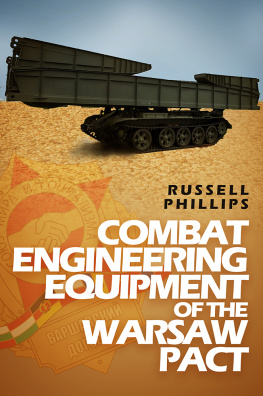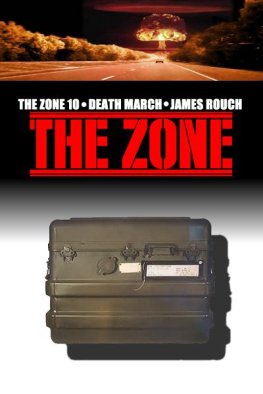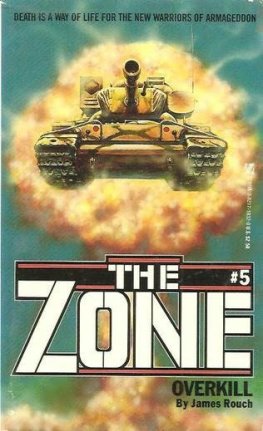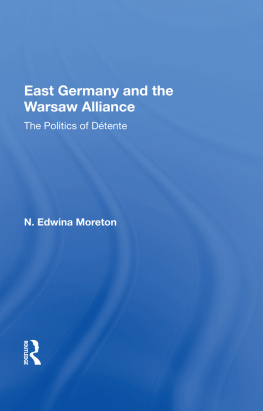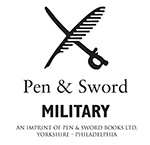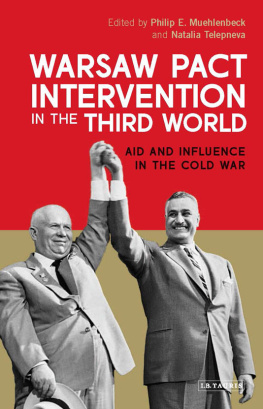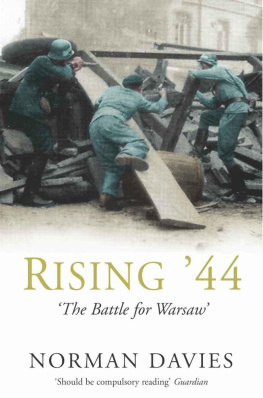Combat Engineering Equipment of the Warsaw Pact
Russell Phillips
Copyright 2017 Russell Phillips
Part of the Weapons and Equipment of the Warsaw Pact series:
- Tanks and Combat Vehicles of the Warsaw Pact
- Combat Engineering Equipment of the Warsaw Pact
Introduction
The Warsaw Pact (more formally, the "Treaty of Friendship, Co-operation, and Mutual Assistance") was formed on 14th May 1955. Officially, it was created in response to the formation of NATO in 1949, and the re-armament and integration of West Germany into NATO. Another, albeit unacknowledged, motive was a Soviet desire to control Eastern European military forces. The Warsaw Pact was disbanded at a meeting of defence and foreign ministers on 25th February 1991. The Soviet Union was dissolved the following December.
The signatories of the Warsaw Pact were:
Albania
Bulgaria
Czechoslovakia
German Democratic Republic (DDR)
Hungary
Poland
Romania
Soviet Union
In 1962, Albania supported China over the Soviet Union in the Sino-Soviet split. They severed relations with the Soviet Union and ended active participation in the Warsaw Pact. In 1968, Albania protested the invasion of Czechoslovakia, and later that year, they formally withdrew from the treaty.
Warsaw Pact combat engineering equipment was simple, rugged, and supplied in larger quantities than in the West. Combat experience in Afghanistan and in the Middle East showed it to be effective. The conscription system used by Warsaw Pact armies meant that training time was limited. This in turn meant that individual engineers were trained on specific tasks, and were less flexible than their Western counterparts. This was offset to some extent by the quantity of equipment that was provided to them. Both peacetime exercises and experience in Afghanistan demonstrated that the Soviet army's engineers were an effective force. The non-Soviet Warsaw Pact armies were not tested in combat, save for the invasion of Czechoslovakia in 1968. Their engineers' training was based on the Soviet model, and their equipment was similar if not identical, although often not as modern. This suggests that they would have been similarly effective, although the older equipment may have had a negative impact.
Throughout this book, armour angles are given in degrees from the vertical: so 0 is vertical, and 90 is horizontal. Where the armour is at an angle, the effective armour thickness is listed in square brackets.
Mine Warfare
The Soviet army considered mines to be an important part of both offensive and defensive warfare. There are no precise figures for the number of mines deployed in Afghanistan, but it is estimated to be in the millions. It is known that when the Soviets withdrew, they handed over records of 613 minefields to the Afghan army.
Minelaying
The traditional method of laying mines by hand was time-consuming, labour-intensive, and vulnerable. The Soviet army therefore developed equipment that allowed vehicles to lay mines quickly. Initially, these were simple chutes that could be attached to the side of a lorry or APC. Mines would drop down the chute by gravity, to lay on the surface, possibly to be buried by a follow-on team. These evolved into the more advanced PMR-2 and PMR-3 remotely-delivered mines (also known as scatterable mines). These could be deployed by helicopter, aircraft, artillery (tube or rocket), or missile.
Remotely-delivered mines were used in large quantities in Afghanistan. They were used to interdict mujahideen lines of communication and supply, and to block escape routes during attacks. Multiple-launch rocket systems were generally favoured for delivering mines, since they could cover a large area in a short time.
Helicopter Minelaying Equipment
Warsaw Pact armies deployed minelaying chutes on Mi-4 and Mi-8 helicopters. The Mi-4 could carry 200 mines, while the Mi-8 could carry 400. Both could lay mines on the surface at a rate of four per minute. The introduction of the very small PFM-1 "butterfly" mine allowed over 7,000 mines to be carried by a single helicopter. Very many of these mines were dispensed by helicopter in Afghanistan.
GMZ and GMZ-2
The GMZ tracked minelayer entered service in the mid-late 1960s. It is based on the SU-100P chassis, a prototype tank destroyer that never entered full production. It was fitted with infra-red driving lights, an NBC protection system, and could generate smoke by injecting diesel fuel into the exhaust. It had a 14.5mm KPVT heavy machine gun for self-defence.
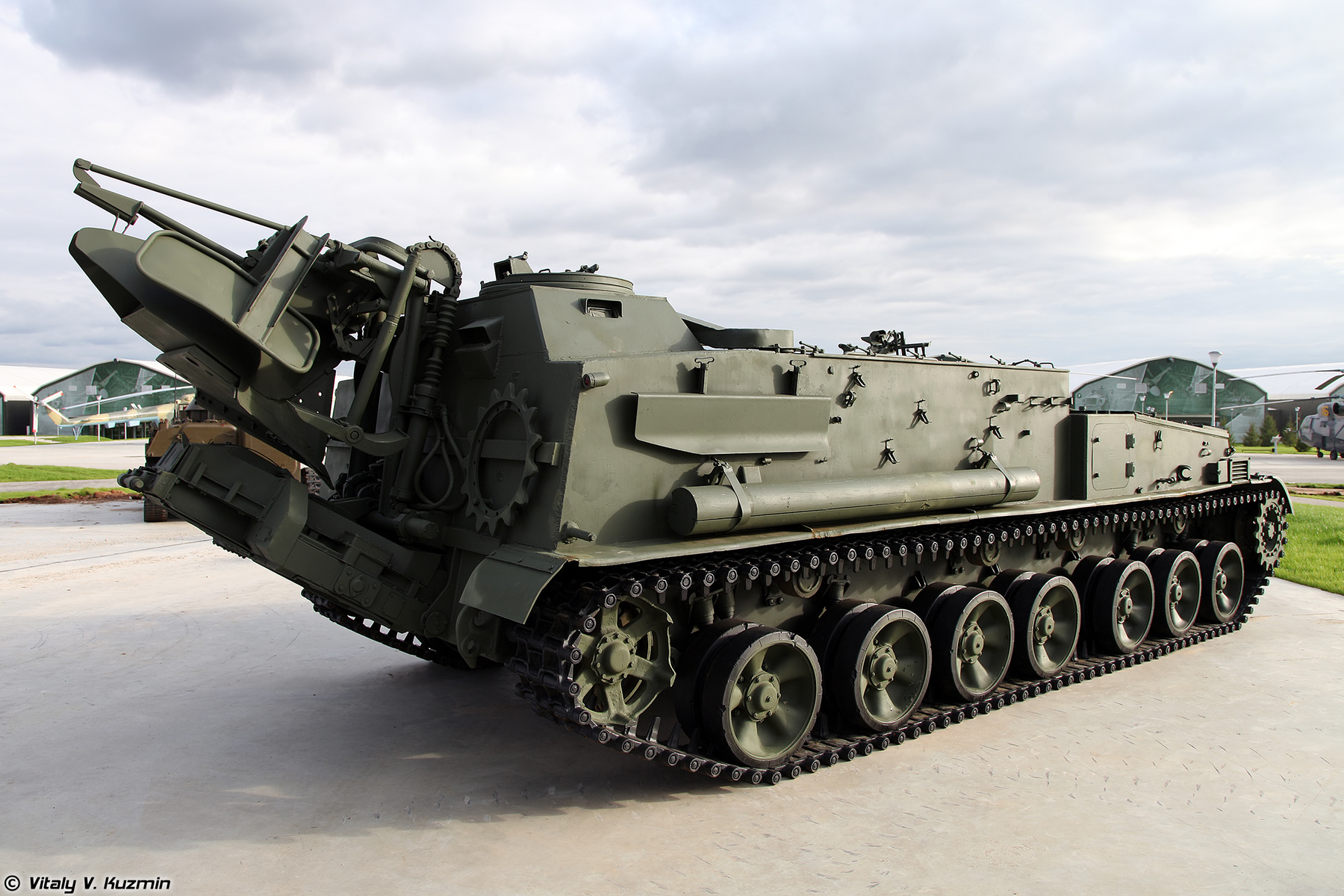
GMZ-2
Preparing the mines would take 15 to 40 minutes. Once this was done, the vehicle would be driven at a speed of up to 16km/hour if the mines were to be laid on top of the ground. If the mines were to be buried, it would drive at about 3km/hour. Mines would be fed onto trays on top of the vehicle. If the mines were to be buried, a plough would lift the ground. The mines would be automatically placed on the ground or inside the ploughed trough.
The GMZ-2 was an improved model. It had a more powerful engine, and allowed for different fuse types to be fitted to the mines.
Specifications: GMZ
Crew: 4
Weight: 25 tonnes
Length: 9.1m (travelling)
Length: 10.3m (operating)
Width: 3.1m
Height: 2.5m
Maximum road speed: 50km/hour
Gradient: 60%
Vertical obstacle: 10.3m
Operating speed: 4-10km/hour (surface mines)
Operating speed: 2-3km/hour (buried mines)
Minelaying rate: 8 mines/minute (surface mines)
Minelaying rate: 4 mines/minute (buried mines)
Mine spacing: 4-5.5m
Reload time: 12-15 minutes
GMZ-3
Unlike the earlier vehicles in the series, the GMZ-3 was based on the SA-4 chassis. The driver and vehicle commander were seated at the front, with the engine to their right. A land-navigation system was fitted, and the driver had infra-red night vision, allowing minelaying operations to be conducted at night. The commander also had infra-red night vision equipment, and operated the PKT machine gun. Smoke dischargers were fitted on the side of the superstructure, at the rear. Unlike the earlier models, it could not generate smoke by injecting diesel into the exhaust.
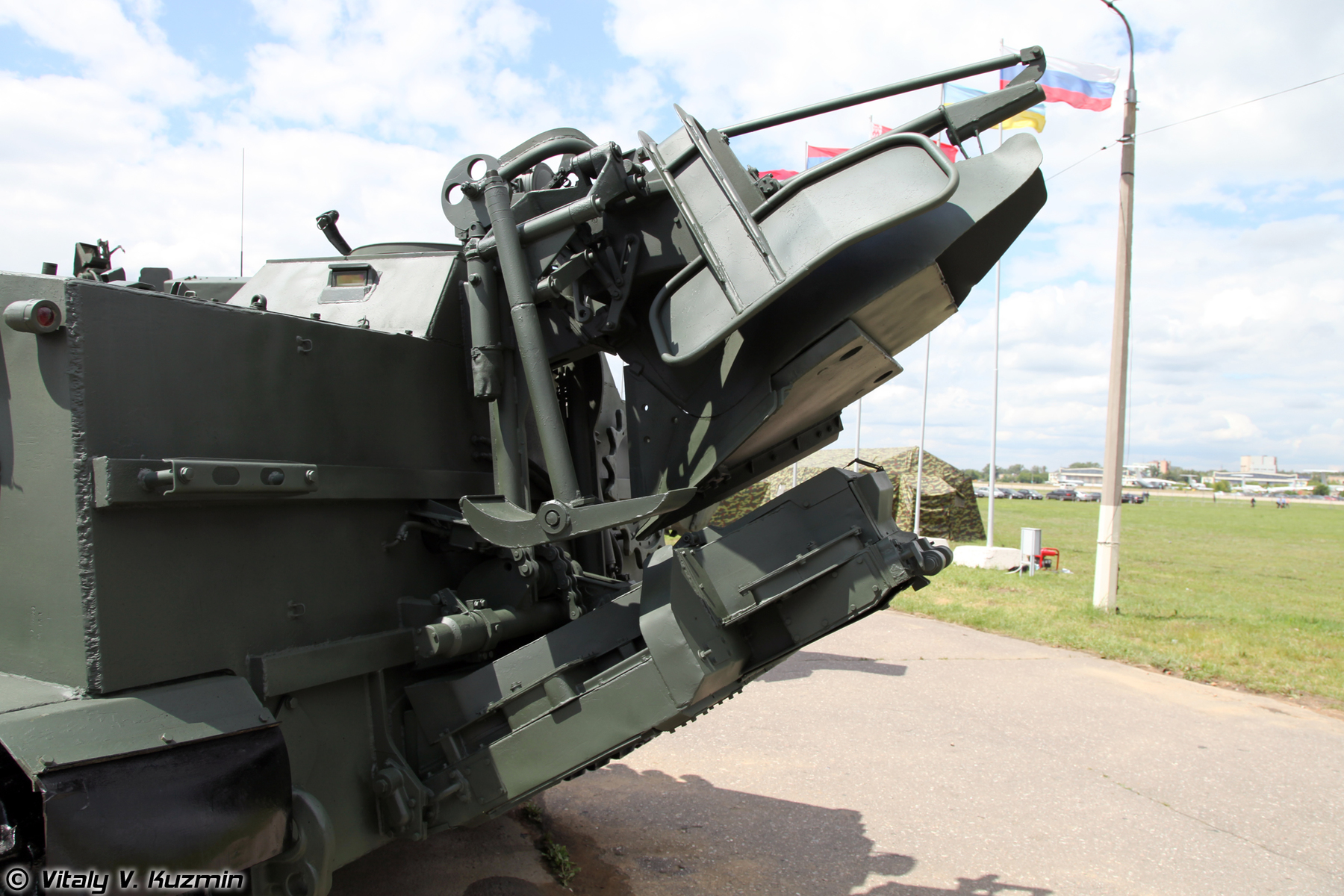
GMZ-3, showing the mine-laying mechanism
The mine stowage and laying equipment was at the rear of the vehicle. 208 mines were carried, loaded into the vehicle through a pair of large roof hatches. When laying mines, they were fed into two chutes, one on each side. The laying system could bury mines up to 12cm deep in soil or 50cm deep in snow. When laying mines on the surface, they were laid at a rate of up to eight per minute at a speed of 6 to 16km/hour. When laying buried mines, the rate was halved, and the maximum speed reduced to 6km/hour.
Specifications: GMZ-3
Crew: 3
Weight: 28.5 tonnes
Length: 8.62m (travelling)
Width: 3.25m
Height: 2.7m (travelling)
Ground clearance: 0.45m
Maximum road speed: 60km/hour
Maximum road range: 500km
Gradient: 58%
Vertical obstacle: 0.7m
Operating speed: 6-16km/hour (surface mines)
Operating speed: 6km/hour (buried mines)
Minelaying rate: 8 mines/minute (surface mines)
Minelaying rate: 4 mines/minute (buried mines)
Mine spacing: 5-10m
Reload time: 15-20 minutes
Armament: 7.62mm PKT MG
PMR-2, PMR-3, and PMZ-4
The PMR-2 was a two-wheel trailer with a pair of chutes. The chutes were wide at the top, where mines were loaded. Mines rolled down a conveyor to the laying mechanism. In the PMR-2, mines were laid on the surface, and could be buried by a follow-on team if required.

